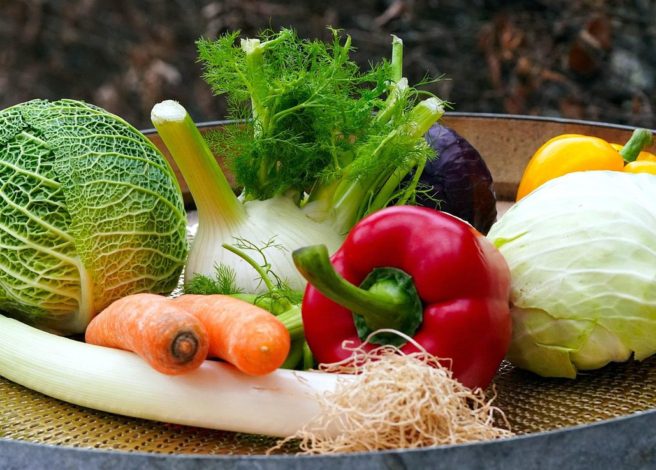Food packaging degradation rates directly impact your bottom line. Is that the most surprising statement you have ever heard? Probably not — especially if you are a professional in the food industry. Each percentage point of premature spoilage represents lost revenue, and in today’s competitive market, these losses add up fast. Learning why some foods degrade faster can help your business save money and keep customers happy.
This week we welcomed Jeff Brandenburg to our discussion table. As founder of The Qfresh Lab/JSB Group and with 45 years dedicated to packaging technology, Brandenburg combines his Chemical and Biomedical Engineering and Food Safety expertise with roles as a university instructor and industry advisor to tackle the evolving challenges of fresh food packaging.
Today, we’ll explore why some foods are finicky about freshness while others keep their cool, and most importantly, how to keep them all happy in their tiny homes.
Why is This Knowledge So Important?
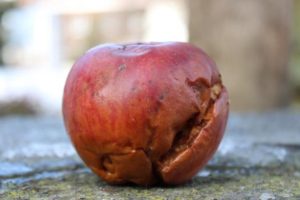 Ignoring proper food storage practices hits your business where it hurts most — your wallet and reputation. When produce spoils prematurely, you’re not just throwing away product; you’re watching your profits disappear into the trash. Poor product appearance drives customers to your competitors, while complaints about spoiled food can spread quickly through word-of-mouth and social media. Every return or credit issued chips away at your bottom line, and rebuilding a damaged reputation costs far more than implementing proper storage practices. The good news? These losses can be prevented with the proper knowledge and tools.
Ignoring proper food storage practices hits your business where it hurts most — your wallet and reputation. When produce spoils prematurely, you’re not just throwing away product; you’re watching your profits disappear into the trash. Poor product appearance drives customers to your competitors, while complaints about spoiled food can spread quickly through word-of-mouth and social media. Every return or credit issued chips away at your bottom line, and rebuilding a damaged reputation costs far more than implementing proper storage practices. The good news? These losses can be prevented with the proper knowledge and tools.
The Living Package: Why Fresh Produce is Different
Here’s a surprising fact that many food business owners don’t know: when you’re packaging fresh produce, you’re packaging something that’s alive (not in a science fiction sort of way, worry not). Fresh fruits and vegetables are different from meat or dairy. After harvest, they keep breathing. They take in oxygen and give off carbon dioxide. This process is known as “respiration.” This biological activity makes packaging produce tricky. It also explains why some foods degrade faster than others.
The Hidden Science of Respiration Rates
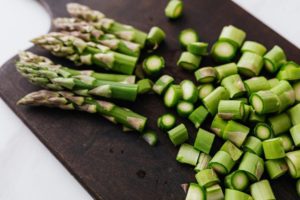 Not all produce breathe at the same rate. Spinach and arugula breathe quickly. In contrast, butternut squash and root vegetables take their time. The rate of respiration affects shelf life. Usually, a higher rate means a shorter shelf life — which is why these foods degrade faster.
Not all produce breathe at the same rate. Spinach and arugula breathe quickly. In contrast, butternut squash and root vegetables take their time. The rate of respiration affects shelf life. Usually, a higher rate means a shorter shelf life — which is why these foods degrade faster.
But it gets more complicated. When you cut produce, you trigger what scientists call a “physiological wound response.” Just as a human’s heart rate increases when injured, cut produce experiences accelerated respiration rates. This is why pre-cut fruits and vegetables typically have shorter shelf lives than their whole counterparts.
The Temperature Factor: A Make-or-Break Variable
Temperature control isn’t just important — it’s absolutely critical. Produce respires faster at higher temperatures, much like humans breathe harder when they’re hot. A temperature breach in your cold chain can trigger a cascade of problems:
- Accelerated respiration leads to faster degradation
- Increased moisture production causes potential rot
- Higher risk of bacterial growth
- Premature spoilage and reduced shelf life
The Challenge of Mixing Products
Mixing different types of produce in the same package can be tricky and potentially a costly mistake for food businesses. It’s important to think about the consequences before doing this. Some combinations can be particularly problematic. For example, cut romaine lettuce requires very low oxygen levels to prevent browning, while broccoli needs higher oxygen levels to stay fresh. Mixing these can lead to one or both products spoiling prematurely.
When mixing two produce items with different respiration rates, accommodate the produce with the higher rate. You can also use less of the higher-respiring product within the package (stick to ten percent).
The Critical Role of Packaging Design
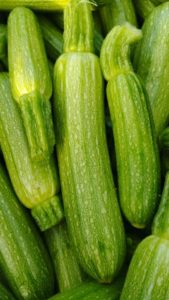 Successful food preservation goes beyond just keeping items cold. It’s about creating the right internal environment — especially for foods that degrade faster. This is accomplished with engineered polymers and/or micro-perforations in the package that allow CO₂ to escape, known as the transmission rate.
Successful food preservation goes beyond just keeping items cold. It’s about creating the right internal environment — especially for foods that degrade faster. This is accomplished with engineered polymers and/or micro-perforations in the package that allow CO₂ to escape, known as the transmission rate.
The ideal package matches its transmission rate to the produce’s respiration rate, maintaining optimal oxygen levels between 3-10% and carbon dioxide levels between 10-15%, depending on the specific product.
We are aware that not everyone may have access to the equipment needed to run these specific tests. However, there are practical and actionable steps food business owners can take, and no lab is required.
Practical Steps for Food Business Owners
Ready to take control of your food storage? Here are five key areas where small changes can make a big difference in your product quality and shelf life. These steps won’t require a complete overhaul of your operations or break your budget. They’re practical, proven methods that you can start implementing today, now that you understand why some foods degrade faster.
1. Daily Temperature Checks
- Install simple digital thermometers in all storage areas
- Check and log temperatures at the start of each shift
- Keep refrigeration units at 40°F or below
- Post temperature logs visibly to ensure accountability
2. Smart Storage Practices
- Keep high-respiring produce (like leafy greens and berries) separate from low-respiring items (like squash and root vegetables)
- Store produce away from ripening fruits, like apples and bananas
- Use smaller, more frequent deliveries for highly perishable items
- Rotate stock using the “first in, first out” principle
3. Package Selection
- Choose containers that allow proper transmission rates for “gassy” vegetables like broccoli and onions
- Use clear packaging to easily spot quality issues
- Select appropriately sized containers to minimize empty space
- Partner with suppliers who understand your specific needs
- Test samples before you commit to a specific package
4. Simple Quality Controls
- Keep a daily spoilage log to track patterns
- Train staff to identify early signs of produce deterioration
- Keep cutting boards and knives clean and sharp
- Establish a regular cleaning schedule for storage areas
5. Customer Education
- Label packages with “best by” dates
- Include storage tips on packaging or receipts
- Train staff to advise customers on proper storage
- Create simple handouts about produce storage tips
Wrapping It Up
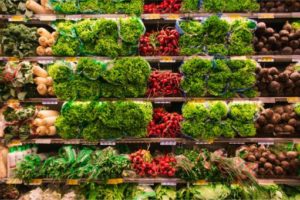 The science of food packaging continues to evolve, but the fundamentals remain constant. Success in the food business requires understanding that you’re not just packaging a product — you’re creating an environment that must work in harmony with your produce’s biological processes. Your packaging is a life support system for your product. Investing in understanding and optimizing this system is just good science…and great business!
The science of food packaging continues to evolve, but the fundamentals remain constant. Success in the food business requires understanding that you’re not just packaging a product — you’re creating an environment that must work in harmony with your produce’s biological processes. Your packaging is a life support system for your product. Investing in understanding and optimizing this system is just good science…and great business!
Visit our Learning Center today to learn more about packaging solutions. Have any questions? Don’t hesitate to reach out. We are here to help!
Interested in learning more about The QFresh Lab/JSB Group, LLC? Visit their website or contact them directly.

